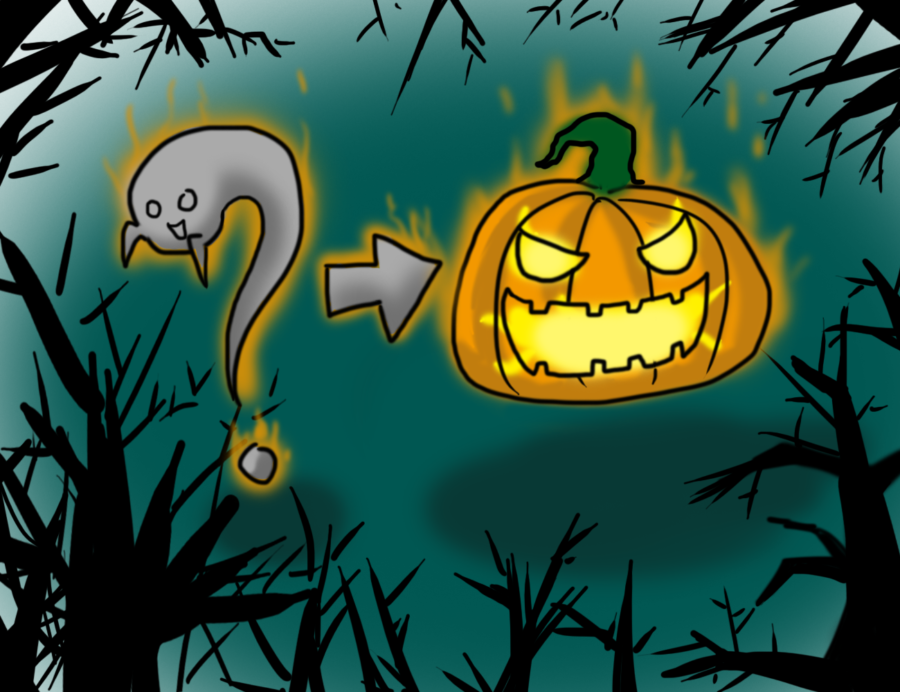Origins of Halloween: A spooky tradition
Illustration: Boun Li/Iowa State Daily
HALLOWEEN1.png
October 31, 2012
Ever wonder why the neighbors dropped $30 to emulate Honey Boo Boo this Halloween?
A few ISU professors know the answer to that question based on the origins of this spooky holiday and how it became what it is today.
Some of the earliest rituals observed this time of year can be seen in the Celtic festival of Samhain, which was celebrated with a fire that burned all night. While marking this Halloween with scary movies, look for the scene in “Halloween 2” where someone writes the word “Samhain” on a school wall.
Michael Bailey, associate professor of history, said this time of year was associated with a closer link between this world and the next, partly because of the fall equinox, when night and day are in closer balance.
“A lot of cultures seem to have associated this time of year in various ways with harvest on the one hand, which is a good thing; but also spirits and contact with the dead, which can be a somewhat scary thing,” Bailey said.
Chris Chase, lecturer of religious studies, described the way modern pagan groups continue the tradition of Samhain.
“Today contemporary pagan groups still celebrate Samhain. It’s the holiest day of the year for pagans, whether in the United States or elsewhere around the world,” Chase said. “It’s one of the things that binds different pagan groups together.”
Celebrations of Samhain today typically include a large fire as well as remembrances of the dead. Chase said some groups today celebrate Halloween as well as Samhain.
Halloween is commonly associated with the Christian feast of All Saints’ Day on Nov. 1 and All Souls’ Day on Nov. 2. Chase explained why the Catholic Church originally wanted to mark these holidays around the time of the pagan Halloween.
“It was kind of a way of balancing out or attempting to combat what was perceived as the negative religious influences or demonic influences of Halloween,” Chase said.
The celebration of Halloween continued in Europe throughout the Middle Ages, and traditions that continue today, such as costumes, began to emerge. This period also saw some of the earliest forms of trick-or-treating.
“The idea of tricks or treats is an interesting one,” Chase said. “Using some sort of little sacrifice, or treat, to keep from being tricked.”
Bailey explained that around the time the Protestant Reformation prompted much of Europe to condemn Halloween, Guy Fawkes Day, celebrated on Nov. 5, emerged in the United Kingdom and was brought to America by immigrants.
“Early on in U.S. history, because early on we’re a very Protestant country, there’s no celebration of Halloween,” Bailey said. “But there is a celebration of Guy Fawkes Day.”
With the arrival of Catholic immigrants in the United States came the celebration of traditional Halloween. While resisted at first, Halloween eventually mixed in with the celebration of Guy Fawkes Day.
“The modern American Halloween is really this blend of the long tradition among Catholics of All Saints’ Day and the various celebrations that go along with that. Then, on the Protestant side, Guy Fawkes Day and the various traditions that go along with that,” Bailey said.
As Chase pointed out, other modern holidays like Christmas and Easter combine pagan influences with religious tradition.
“Halloween is not the only holiday like that,” Chase said. “It is part of a larger pattern, you could say.”
Bailey described the new movement of modern American Halloween to some of the places exposed to American popular culture.
“Across Europe, regardless of Protestant or Catholic now, I think it’s just that people are starting to celebrate Halloween because of the American influence,” Bailey said.







